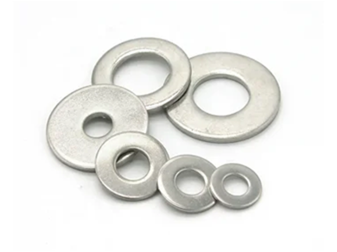Pro . 19, 2024 10:50 Back to list
threaded rod types
Understanding Threaded Rod Types A Comprehensive Guide
Threaded rods are versatile and essential fasteners commonly used in various applications, including construction, manufacturing, and home improvement. These elongated metal rods, characterized by their continuous helical ridges or threads, come in various types, each designed for specific applications. Understanding the different types of threaded rods can help you choose the right one for your project and ensure optimal performance and safety.
1. Material Types
The material of a threaded rod is crucial as it affects both the rod's strength and its resistance to environmental factors. Here are some common materials used to manufacture threaded rods
- Carbon Steel This is the most common material for threaded rods. It is strong, cost-effective, and suitable for most general purposes. However, carbon steel can be prone to corrosion, so it is often coated with zinc to enhance its durability.
- Stainless Steel Known for its corrosion resistance, stainless steel threaded rods are ideal for applications in humid or corrosive environments, such as marine or chemical processing industries. They offer great strength without the need for additional coatings.
- Alloy Steel These threaded rods are made from a mixture of various elements, enhancing their strength and toughness. Alloy steel rods are commonly used in high-stress applications, such as automotive and aerospace industries.
- Bronze and Brass These materials are used for threaded rods in decorative applications or where electrical conductivity is important. Bronze is also resistant to corrosion, making it suitable for marine applications.
2. Types of Threads
Threaded rods come with several different thread types, each serving specific purposes
- Coarse Threads These have fewer threads per inch, making them easier to work with in quick assembly. Coarse threads are commonly used in applications with lower load-bearing requirements.
- Fine Threads Fine threads have more threads per inch, providing greater strength and tension capability. They are ideal for high-precision applications, such as in automotive assemblies and machinery.
- Unified Threads Standardized by the American National Standards Institute (ANSI), unified threads are the most common thread type in the U.S., available in both coarse and fine variations.
- Metric Threads Used more commonly in international applications, metric threads are standardized under ISO (International Organization for Standardization) and are designated by the thread pitch and diameter in millimeters.
threaded rod types

3. Applications of Threaded Rods
Threaded rods are used in a wide range of applications due to their adaptability and strength
- Construction Threaded rods are vital in construction, used for securing structures, supporting glass, and installing framing systems. They provide essential tensile strength to hold materials together securely.
- Machinery In machinery, threaded rods are often used as tie rods or tension rods, allowing for adjustable tension and alignment in mechanical systems.
- Furniture Many furniture manufacturers use threaded rods for assembly, providing adjustable height or flexibility in structure, making it easier to construct and disassemble furniture pieces.
- Industrial Applications Threaded rods are frequently employed in various industrial settings, including the manufacturing of machinery, motors, and pumps, where secure fastening is essential.
4. Installation and Best Practices
Installing threaded rods requires attention to detail to ensure strength and stability. Here are a few best practices
- Use Appropriate Hardware Ensure you use the correct nuts and washers designed for your specific type of threaded rod. This enhances grip and prevents loosening under vibration.
- Torque Specifications Follow recommended torque specifications to avoid over-tightening, which can lead to material failure.
- Consider Length Choose a length suitable for your application. Cut the threaded rod only if necessary, and ensure the cut threads are clean and unobstructed.
- Alignment Always check for proper alignment before securing the rod to avoid misalignment, which can lead to excessive stress on the components.
Conclusion
In conclusion, understanding the various types of threaded rods, their materials, thread types, and applications is essential for anyone involved in construction, manufacturing, or DIY projects. By selecting the appropriate threaded rod for your specific needs and following best practices during installation, you can ensure a durable and reliable outcome for your projects. Whether you're a professional or a hobbyist, knowledgeable use of threaded rods can greatly enhance the quality of your work.


